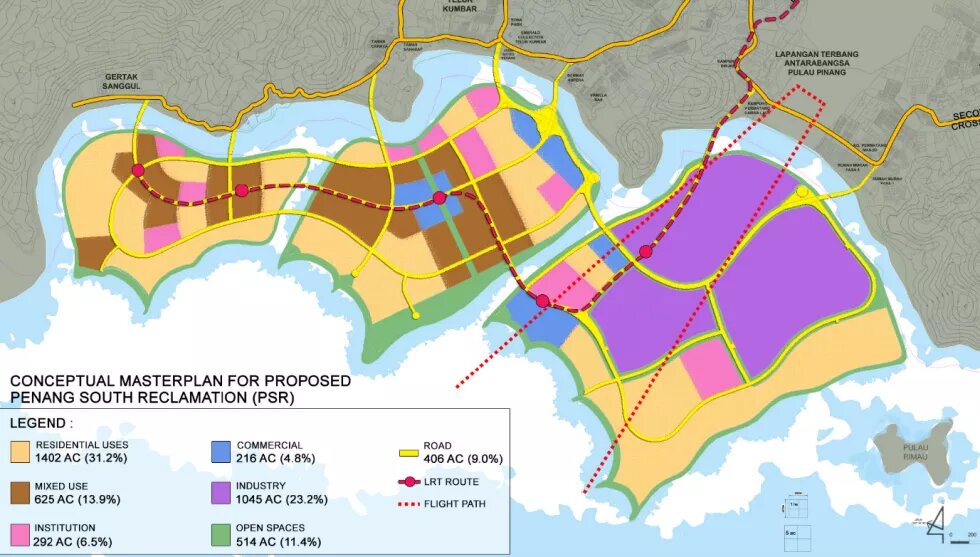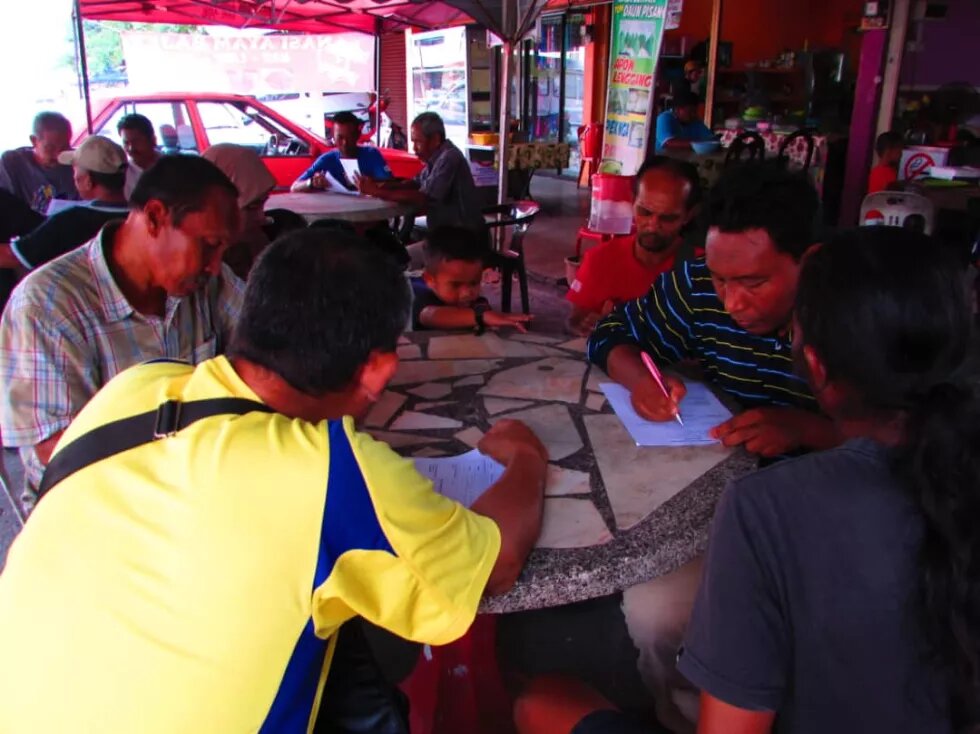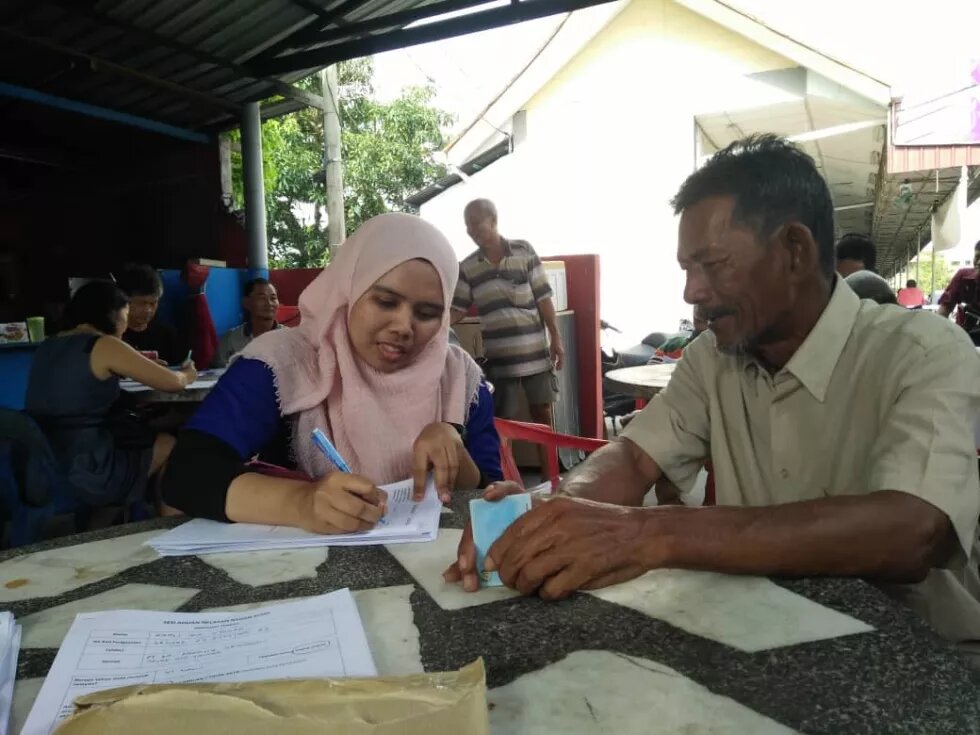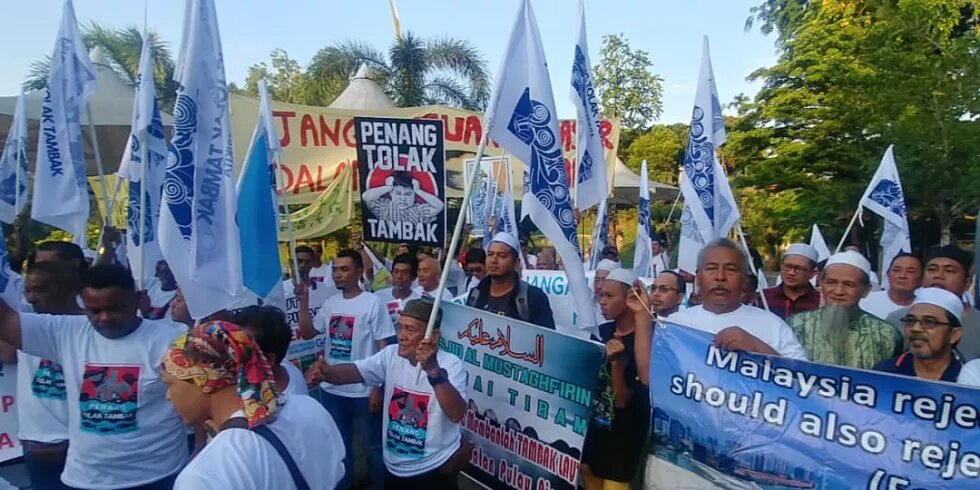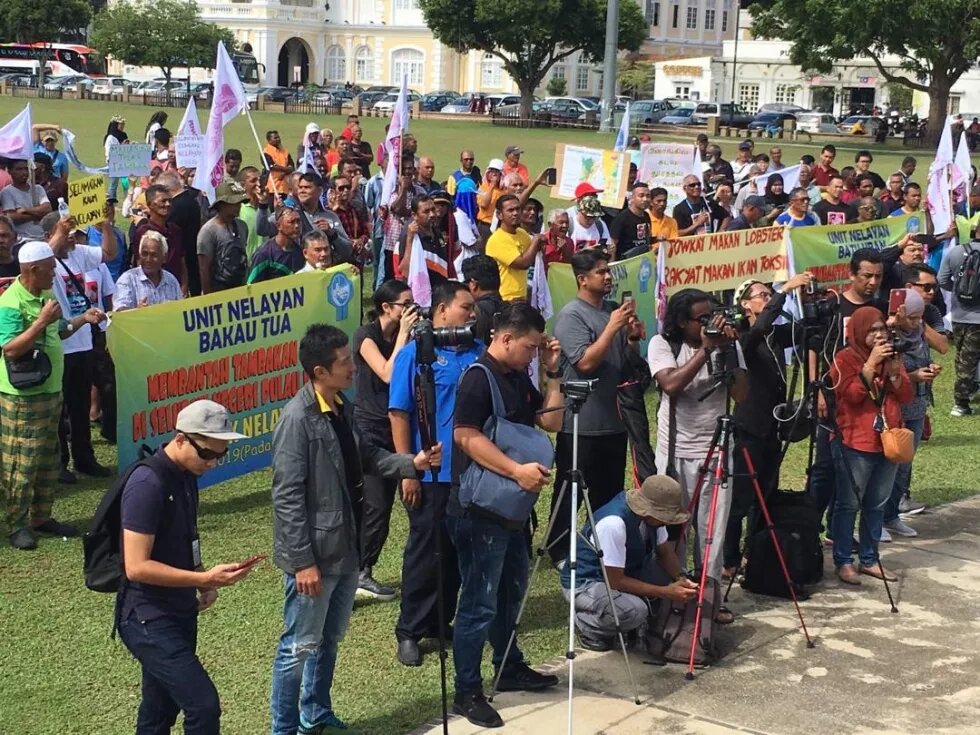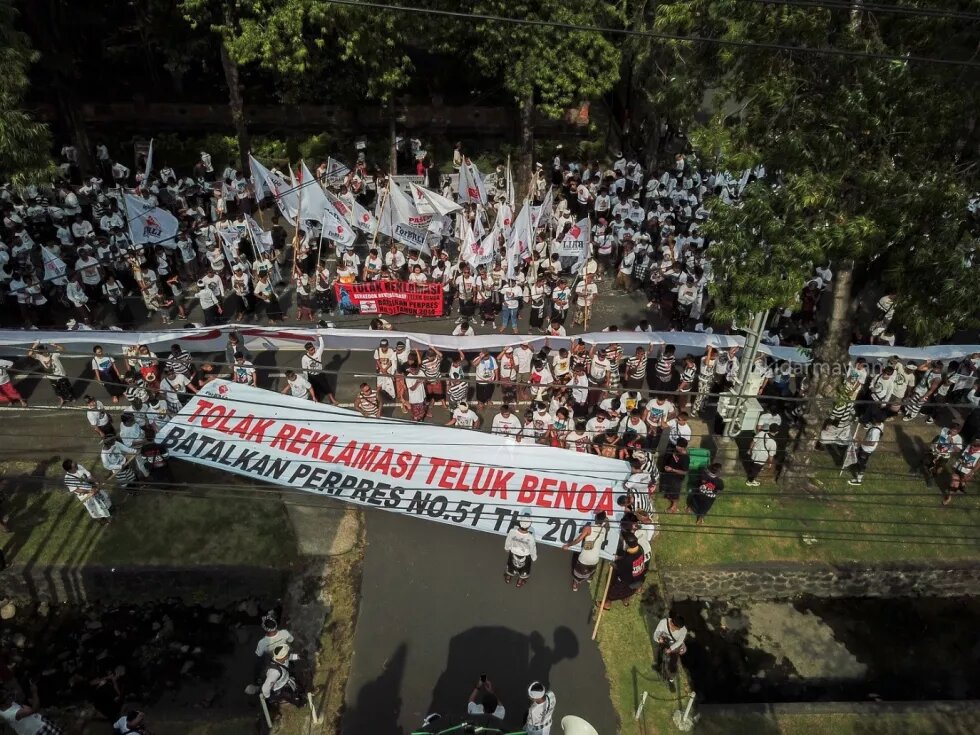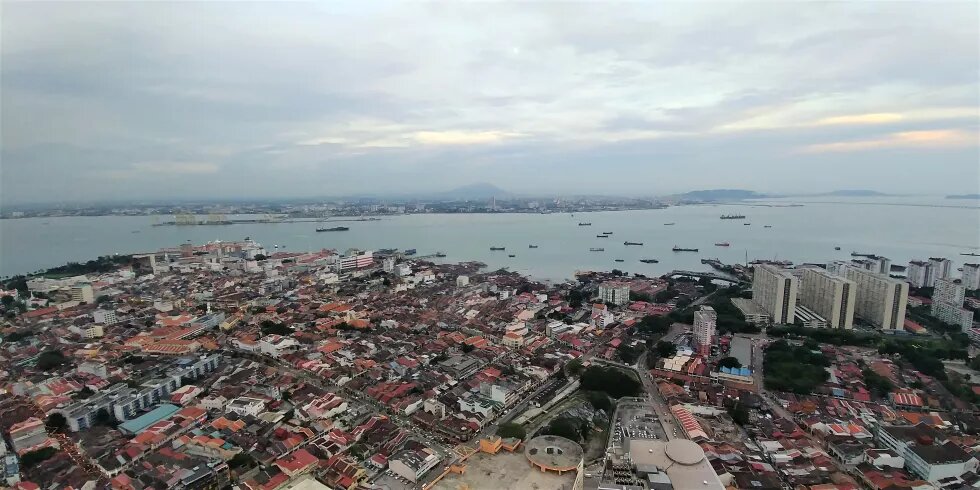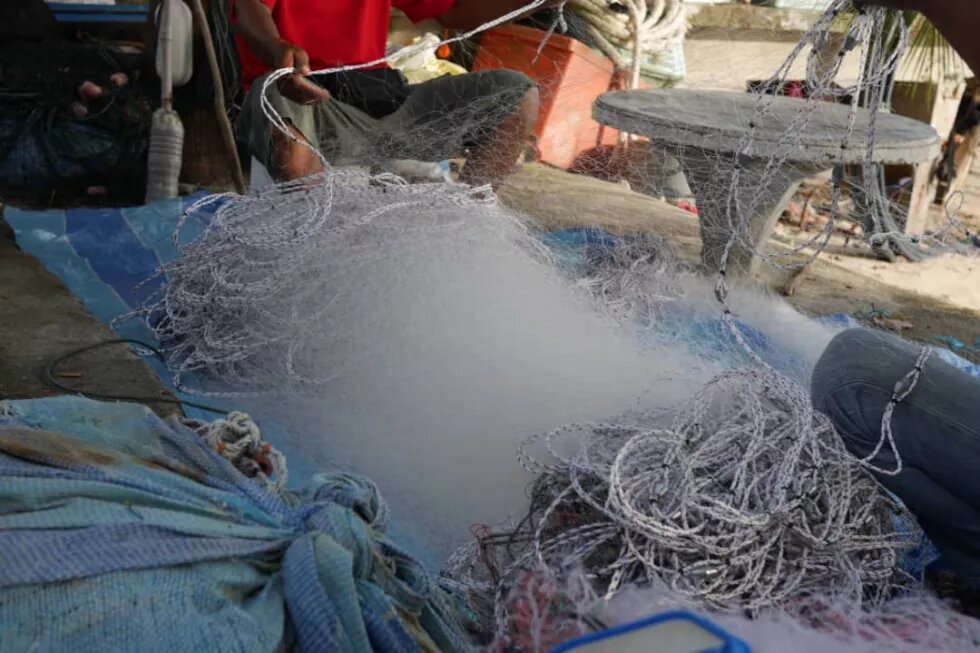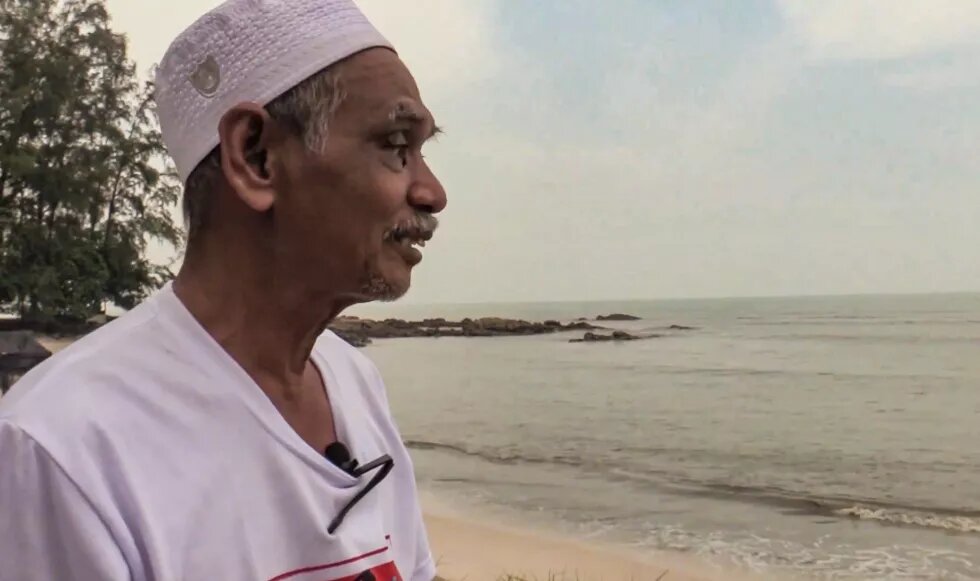
“The fishermen here have everything they need. The sea has always provided for us,” said Tuan Haji Zakaria, a 60-year-old fisherman from Sungai Batu. His father too was a fisherman and the fishing village where he grew up had fished from the sea for the past many generations. Sungai Batu is just one of the eight fishing villages found along the 17km southern coastline of Penang island, extending from Batu Maung at the east point to Gertak Sanggul on the west.

The state of Penang in northern Peninsular Malaysia consist of an island and mainland and is home to approximately 1.77 million people. For a country that registered an urbanisation rate of 75%[1] (20% higher than the global urbanisation rate), Penang has among the highest population densities in Malaysia. Amidst the growing pressure of urbanisation, the southern coast fishing villages remained the last of its kind in Penang island. Tucked quietly along the gentle bay where fishes, shrimps and crabs thrive in seasons, Tuan Haji Zakaria called this place the ‘golden area’.
However, life as he knows it would dramatically change when the state government announced a proposal to reclaim three artificial islands in 2015[2]. The 4,500 acres of reclaimed islands would sit squarely on the waters where Tuan Haji Zakaria and thousands other traditional fishermen like himself had depended on for their livelihood. The ambitious project dubbed as the “Penang South Reclamation” or PSR (recently rebranded to “Penang South Islands”) would see most of its reclaimed land area auctioned off by the state government of Penang to the highest bidder to raise enough fund for the Penang Transport Master Plan (PTMP).
The PTMP is the state government’s intention to alleviate the state’s perennial traffic congestion, with a focus on new transit line and highway constructions. The plan had received critiques from civil societies and concerned citizens alike on the lack of attention given to improving the current public bus services as a low hanging fruit which doesn’t require an intensely high capital investment. With the PTMP, the future landscape of Penang would be altered like never before by the highways which will bore and cut through its hills, possibly including a tunnel that goes underwater; a single line of LRT and BRT and a couple of monorail lines cutting through existing densely built areas. A Canadian infrastructure company had warned that the PTMP is deemed ‘too risky’ for private investors as everything (including the three-island reclamation) was lumped together into one mega project. At the time of writing, the PTMP bears a hefty price tag of RM46 billion (USD11.2billion) – which ballooned from RM27 billion when the plan was first announced four years ago. Meanwhile, the cost of reclamation is currently projected at RM11 billion. Caught deep in the grand scheme of billions of ringgits are the traditional fishermen who suddenly find themselves relegated to a vulnerable position given the uncertain future. Now that the effect of urbanisation has finally encroached their coastal enclave, the sea and the coasts - a public common and a lifeline for the families who depends on it, would now face an existential threat. “If we fight the seas, we will perish,” said Tuan Haji Zakaria.
Land reclamation then and now
If there was anywhere in Malaysia which is no stranger to land reclamation, it would be Penang island. Since its colonial days in the 19th century, the British reclaimed a swathe of mudflats to create Beach Street for its entrepôt expansion. After Malaysia gained independence in 1957, Penang initiated the growth of Malaysia’s manufacturing industry in the 1970s – which sits on the reclaimed coastal zone of Bayan Lepas. In recent times, more coastal areas are reclaimed but for upscale residential and commercial properties, such as Queensbay, Karpal Singh Drive, The Light and Tanjung Tokong which also include a luxury yacht marina. The stretch along Gurney Drive, once a scenic public waterfront is now barricaded and reclaimed to build a public and commercial seafront park and a private wellness centre. The reclamation may possibly provide a section for an undersea highway that would connect Penang island to its mainland.
Noticeably, the trend for the intended use of reclaimed land in Penang has evolved with the passage of time – from providing land for ports and the manufacturing industry (both of which is has national importance), to luxury real estate development for the affluent. Although it is stipulated in the 2010 National Coastal Zone Physical Plan of Malaysia that coastal reclamation for tourism and urban purposes are discouraged, it has been largely ignored not just in Penang but the whole of Malaysia in general. Large- scale reclamation projects from the RM42billion (USD10billion) Melaka Gateway reclamation in Malacca[3] and RM17billion (USD4billion) Forest City in Johor[4] – both of which has linkages to Chinese construction companies – are among some of those forming the current trend of approved land reclamation projects in Malaysia.
The hidden cost of land reclamation
The state government of Penang had consistently insisted that these three artificial islands is key to unlock Penang’s economic potential. From attracting investments, creating new jobs and meeting the housing demands of the enlarging middle -class society; the three reclaimed islands were also touted to provide sufficient and quality affordable houses for the bottom 40% income, while engaging them in a ‘more productive’ livelihood that would lift themselves and their children up the social mobility ladder.
Such optimistic narrative of land reclamation tends to mask its capacity to also dispossess the vulnerable communities and threaten the environment – both of which are against principles of sustainable development. A critical assessment on what is often presented as development beyond its economic justifications will often reveal the hidden politics of land, the cost of displacement, and the inquiry into environmental sustainability. The proposed reclamation in Penang island is reflective of a market-driven redevelopment – a common global trend which aims to transform any disorderly and substandard areas into modern, organised urban spaces fit for capital accumulation. Such development model has no space for the fishermen community whose livelihood is dependent on having the sea intact.
Given that Penang is no stranger to reclamation projects, some may wonder what’s behind the unprecedented scale of rejection of the PSR by the fishing community. The silence of the fishermen in the past may seem to indicate consent to having more reclamation – but there was just no platform where their voices can be publicly heard. The following are just some of the feedback given by a hundred over fishermen who are suffering the effects of reclamation projects in Tanjung Tokong and Butterworth from surveys conducted by civil societies.
“I am just digging into whatever left in my savings. I barely earn enough from fishing ever since the reclamation project began a couple of years ago.”
“After the reclamation began, the waters have become very turbid with silt. Our catch volume has decreased drastically, as we spend more time out at sea but harvesting very little.”
“The areas where we fish are shrinking with the reclamation closing in on both sides of the coast (i.e. Penang island and mainland).”
“Important nursery ecosystems such as the mangrove has been destroyed, marine life is dwindling, and I am in debt.”
These feedback from the affected fishermen challenges the positivistic and dogmatic outlook insisting that ‘reclamation is development’. Any exception that proves this perception wrong is assumed to be easily overwritten by a set of mitigation actions and off-set programmes; all but diminishes the significance and extend of the negative impact. The actual human cost is often suppressed under a list of ‘way-out’ prescribed by an institution of technocrats usually consist of consultants, academicians and politicians which often failed to deliver as promised. Among the typical recommendations given would be monetary or in-kind compensations, job transitions and other forms of remediation to assuage the loss of livelihood or displacement. A critical assessment on the past land reclamation projects in Penang would reveal that these recommendations are either too presumptuous of its anticipated outcomes or have been poorly implemented due to organisational inefficiencies or lack of financial capacities to carry the plans through. Most fishermen in Tanjung Tokong had to resort to taking up part time jobs in order to meet their cost of living. It is important to not mistake forced adaptation as a matter of choice.
As if to assure the fishermen at the coastal south of Penang island that they would not be left behind or impacted in an adverse manner, the EIA report of this reclamation project stated that the benefits for them includes the “accessibility to future amenities such as parks and recreational facilities, education, health care and government services on PSR Islands”. While the report seems to suggest that these are fair replacements for the loss of the fishing areas, they are but simplistic assumptions which would essentially pave the way of an uncertain future for thousands of coastal fishermen. These assumptions also undermine the complexity of the existing social, economic and political order that has supported the B40 communities for many generations. The EIA also did not include the negative impact of the large-scale sand mining activity for the many years to come off the coast of Perak state - which adverse impacts to the marine environment would be felt by the most by the local fishing community in Perak.
As the state government continues to push for this project to commence, the fishermen were not ready to throw in their nets just yet. As a response, about two hundred fishermen from Penang and Perak held a peaceful rally outside the Malaysian parliament on the 11th July 2019. The fishermen were in high spirits, waving their Penang Tolak Tambak flags and hoisting posters and banners up high, chanting their protests under the hot sun by the roadside to the parliament. By the afternoon, news about the fishermen’s rally were all over social media and online news portal. On the 4th November, the fishermen once again held a peaceful rally outside the state legislative assembly in Penang[5] which was highlighted again in national news, printed and broadcasted. With the increased visibility, the rallies has resulted in more people talking about this issue beyond just Penang but it has also polarized the nation into those who perceive the reclamation as a necessary form of development (while prescribing a plethora of ideas on how the fishermen should be moving on from fishing instead of getting in the way of economic growth); and those who sympathize with the plight of the fishing community (while wondering if there is a more sustainable way to develop that doesn’t decimate the environment and increase carbon emissions).
This case is not unique to Penang alone, as the same outcome can be seen elsewhere in Malaysia and countries all over the world whereby large-scale reclamation has taken over the natural coastlines. In the region of Southeast Asia, land reclamation has been a highly contentious issue[6] such as in Jakarta and Bali. “Indonesia is facing a lot of reclamation project, especially in Jakarta where there are plans to create 17 artificial islands,” said Wardarina, Indonesian activist and feminist at Asia Pacific Forum on women, Law and Development. The project was halted in the early 2016, but the suspension was later lifted a year and a half later, which made way for the completion of the four reclaimed islands[7]. “In Bali however, there is a movement against the reclamation project in Teluk Benoa which had managed to halt the project from moving forward. When we are consistent with the campaign – there is a chance to stop the project,” she added.
Redefining development
In the tension between the human-made and the natural world – the former seems to take an uncontested priority at the expense of the latter. It is an outcome that may not necessarily constitute as good judgement especially in a future exposed to climate change impacts. However, a Penang state official recently made a press statement claiming that the reclaimed islands is a way to combat climate change and protect the Penang island from rising sea waters[8]. To the local environmentalists against this reclamation, the perplexing remark was taken as adding insult to injury.
Notwithstanding the need for developing countries to grow economically, the scale of environmental destruction and population displacement wielded by such reclamation projects essentially undermines the nation’s ability to achieve a sustainable and inclusive development. While the damage and loss of the environment and resources are well- acknowledged, there hasn’t been proper economic valuation of the ecosystem services which is ever compelling enough to halt a reclamation project. Regardless of an increased vulnerability to coastal erosion, sedimentation, loss of biodiversity, natural habitat destruction, decline of bird species and fisheries resources, increased water pollution, frequent harmful algal blooms and what nots - the projected economic returns from land creation, even if it is based on speculation, would trump at the end of the day.
Placing a blanket definition of ‘development’ on any form of land creation, landuse change and resource exploitation without an informed understanding of the social and environmental cost, is to legitimize displacement and dispossession; and subsequently causing deeper inequality. The Ministry of Economic Affairs of Malaysia is making attempts to navigate away from this outcome by anchoring the country’s economic growth on social objectives. The policy interventions in the 12th Malaysian Plan in 2020 will be driven by three development dimensions; namely economic empowerment, environmental sustainability and social re-engineering. While it is encouraging to see that the country is willing to move away from development defined from a purely economic frame of reference, it would take unwavering political resolution for this egalitarian agenda to be materialised on the ground. Herein embedded a deep-seated concern, or rather a litmus test, on whether the ‘New Malaysia’ would fervently guard environmental sustainability - one of its three development dimensions in the 12th Malaysian Plan, given the nation’s tendency to remain on the conventional economic growth model.
The value and development proposition today may still be limited to economic growth, measured almost too strictly by GDP and GNI. The lack of valuation and validation of a different kind of value and benefits such as ecosystem services provided by mangrove and the sea, has led to an unchallenged extraction of the commons for private use. State- led privatization of land and its coastal zone by way of reclamation is an example of how the public commons are constantly undermined. These attacks on the commons essentially lowers living standards, reduces the quality of life and corrodes values of solidarity, sharing and community. Too often, the cost borne by the existing community to make way for development is not viewed from a phenomenological perspective – that is to recognize that displacement and losses are not just physical but emotional as well, especially when one is feeling alienated from a place that one has long been attached to. It is about seeing displacement of the working- class and poorer communities, such as the traditional fishermen, for what it really is - instead for what the society insist it should be.
Perhaps, the meaning of ‘development’ would only be reimagined and broadened when there is a tangible evidence showing that land creation doesn’t necessarily lead to the economic growth as promised. And that a less-orderly, poorer neighbourhood is not necessarily a place devoid of socioeconomic potential. It is commonly assumed that a society and its economic capacity will eventually fall into decay if it does not possess new land for capital to grow. Perhaps it is the lack of foresight and wisdom in the managing the existing land that has been the core problem. Development should be about improving the condition of existing communities and their neighbourhoods by allocating sufficient investments to commensurate with a more localised, incremental and flexible growth – one that purposefully responds to the current social capital and aspirations of the community, without jeopardising those of the future generations. But until such a time when the public and decision makers are able grasp a more nuanced understanding and critique the environmental and social costs of the neoliberal urbanisation narrative, the definition of what constitutes ‘development’ will remain a divisive discourse.
References
[1] New Straits Times. (2018) “Govt prepares for rapid urbanisation.” 22 March 2018. https://www.nst.com.my/news/government-public-policy/2018/03/347940/gov…
[2] Tan, S.C. (2015). “Reclaimed land to fund project in Penang.” The Star. 28 November 2015. https://www.thestar.com.my/news/nation/2015/11/28/reclaimed-land-to-fun…
[3] Free Malaysia Today. (2019) “Melaka Gateway project continues but question remains on feasibility.” 11 October 2019. http://www.freemalaysiatoday.com/category/nation/2019/10/11/melaka-gate…
[4] South China Morning Post. (2019) “Malaysia’s Forest City to hand over more than 20,000 residential units this year as it unveils new golf course.” 9 September 2019. https://www.scmp.com/business/article/3026354/malaysias-forest-city-han…
[5] Trisha, N. (2019) “Penang fishermen protest reclamation project, say it will affect their livelihood.” The Star Online. 4 November 2019. https://www.thestar.com.my/news/nation/2019/11/04/penang-fishermen-prot…
[6] Zhang, J., Su, F., & Ding, Z. (2017). Sea Reclamation Status of Countries around the South China Sea from 1975 to 2010. Sustainability, 9(6), 878.
[7] Gokkon, B. (2018) “Jakarta cancels permits for controversial bay reclamation project”. Mongabay. 2 October 2018. https://news.mongabay.com/2018/10/jakarta-cancels-permits-for-controversial-bay-reclamation-project/
[8] Mok, O. (2019). “Land reclamation to protect island from rising waters, says Penang exco.” Malay Mail. 21 October 2019. https://www.malaymail.com/news/malaysia/2019/10/21/land-reclamation-to-…

